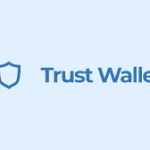How to Set Up a Cross-Chain Wallet: An In-Depth Guide
### Introduction
In the rapidly evolving world of blockchain technology and cryptocurrencies, cross-chain wallets have emerged as essential tools for users looking to manage multiple digital assets across different blockchain networks. This article aims to provide a comprehensive guide on setting up a cross-chain wallet, exploring the underlying technology, use cases, and step-by-step instructions for various wallet types.
### Understanding Cross-Chain Wallets
#### What is a Cross-Chain Wallet?
A cross-chain wallet is a cryptocurrency wallet that allows users to store, manage, and exchange digital assets across multiple blockchain networks. Unlike traditional wallets limited to a single blockchain, cross-chain wallets facilitate interoperability among various networks, thereby enhancing the usability and accessibility of cryptocurrencies.
#### Importance of Cross-Chain Functionality
1. **Diversification of Assets**: As the cryptocurrency market continues to expand, users often hold multiple assets across different blockchains. Cross-chain wallets simplify the management of diverse portfolios.
2. **Liquidity**: Cross-chain wallets allow for easier trading between assets on different networks, thus enhancing liquidity in decentralized finance (DeFi) markets.
3. **Enhanced User Experience**: Users can access different blockchain networks with a single interface, making it more convenient to interact with various DApps (decentralized applications).
### The Technology Behind Cross-Chain Wallets
#### Blockchain Interoperability
Cross-chain wallets leverage blockchain interoperability protocols that enable seamless communication between different blockchains. Key technologies include:
1. **Atomic Swaps**: This allows for the direct exchange of one cryptocurrency for another without the need for intermediaries.
2. **Wrapped Tokens**: Tokens from one blockchain (e.g., Bitcoin) can be “wrapped” to represent them on another blockchain (e.g., Ethereum), allowing for participation in that blockchain’s ecosystem.
3. **Blockchain Bridges**: These are protocols or services that facilitate the transfer of assets and data between different blockchains.
#### Security Measures
Given the complexities involved, cross-chain wallets are often targeted by hackers. Security measures include:
1. **Multi-signature Support**: This enhances security by requiring multiple signatures for transactions.
2. **Encryption**: End-to-end encryption is utilized to secure private keys and sensitive data.
3. **Smart Contract Audits**: Wallets and associated smart contracts undergo thorough audits to identify vulnerabilities.
### Selecting the Right Cross-Chain Wallet
Before diving into the setup process, it is crucial to choose the right cross-chain wallet that fits your needs. Consider the following factors:
1. **Supported Assets**: Ensure that the wallet supports the cryptocurrencies you intend to manage.
2. **User Interface**: A user-friendly interface can streamline the management of various assets.
3. **Security Features**: Look for wallets with robust security protocols.
4. **Community and Developer Support**: A strong community and active developers signify ongoing support, updates, and improvements.
### Types of Cross-Chain Wallets
1. **Software Wallets**: These are downloaded applications or browser extensions, such as MetaMask or Trust Wallet, that allow users to interact with DApps and manage assets across blockchains.
2. **Hardware Wallets**: Devices like Ledger or Trezor that securely store private keys offline, offering enhanced security against hacks.
3. **Web Wallets**: Online wallets hosted on websites that provide easy access but may pose security risks if not managed properly.
4. **Mobile Wallets**: Apps designed for smartphones that offer convenience for everyday transactions.
### Step-by-Step Guide to Setting Up a Cross-Chain Wallet
#### Step 1: Research and Choose a Wallet
Begin by researching different cross-chain wallets based on the factors discussed earlier. Opt for a wallet known for its security features and user-friendly interface.
#### Step 2: Download the Wallet
If you choose a software or mobile wallet, download it from the official website or app store. For hardware wallets, purchase from a reputable source to avoid counterfeit devices.
#### Step 3: Installation and Setup
For software wallets:
1. Install the application or browser extension.
2. Create a new wallet or import an existing one.
3. Follow on-screen prompts to set up a strong password.
For hardware wallets:

1. Connect the device to your computer.
2. Follow the setup instructions from the manufacturer.
3. Ensure you safely write down your recovery seed phrase.
#### Step 4: Security Settings
1. **Set Up Two-Factor Authentication (2FA)**: If available, enable 2FA for an extra layer of security.
2. **Backup Your Wallet**: Regularly backup your wallet’s seed phrase and any relevant private keys.
#### Step 5: Adding Assets
Once your wallet is set up, you can start adding assets. The process generally involves:
1. Selecting the blockchain network of your desired asset.
2. Generating or locating the receive address for that cryptocurrency.
3. Transferring assets from another wallet or exchange into your newly created cross-chain wallet.
### Using Your Cross-Chain Wallet
#### Sending and Receiving Assets
To send assets:
1. Select the cryptocurrency you want to send.
2. Enter the recipient’s address and the amount.
3. Confirm the transaction details before finalizing.
To receive assets:
1. Choose the asset you want to receive.
2. Share your wallet address with the sender.
#### Cross-Chain Transactions
Depending on the wallet’s capabilities, users can perform cross-chain transactions using features such as atomic swaps or by utilizing blockchain bridges:
1. Ensure both assets are supported by the wallet.
2. Initiate an exchange following the wallet’s specific process for cross-chain transactions.
#### Monitoring and Managing Your Portfolio
Most cross-chain wallets provide tools to monitor your portfolio’s performance. Explore analytics and utilize notifications to stay updated on price changes.
### Best Practices for Securing Your Cross-Chain Wallet
1. **Regularly Update Your Wallet**: Keep your wallet software up-to-date to protect against vulnerabilities.
2. **Use a Hardware Wallet for Large Holdings**: For enhanced security, store significant amounts of cryptocurrency in a hardware wallet.
3. **Be Aware of Phishing Attacks**: Always verify links and be cautious of unsolicited messages asking for wallet details or private keys.
### Conclusion
Setting up a cross-chain wallet is a pivotal step in navigating the multifaceted world of cryptocurrencies. With this guide, users can explore the vast potential of managing multiple digital assets efficiently and securely. As interoperability continues to evolve, cross-chain wallets will play a significant role in the future of decentralized finance and the broader blockchain ecosystem. By understanding the technology, choosing the right wallet, and following best practices, users can enhance their cryptocurrency experience, mitigating risks while maximizing opportunities.


